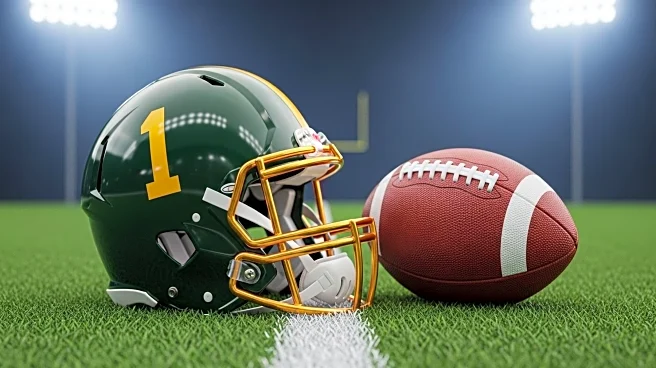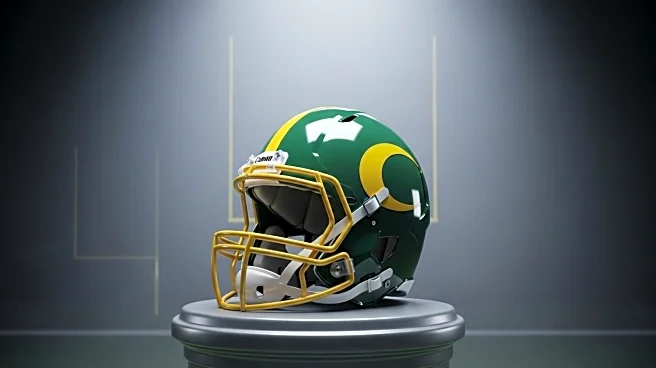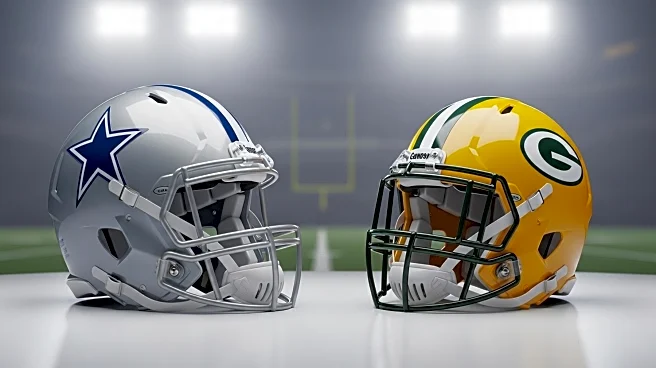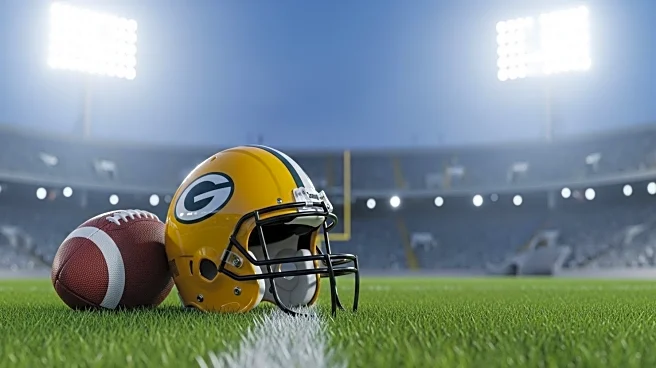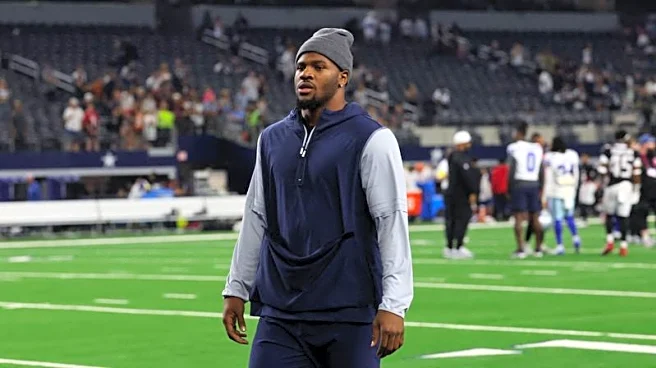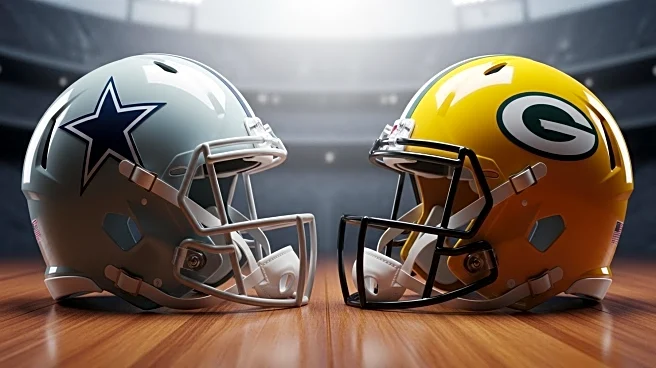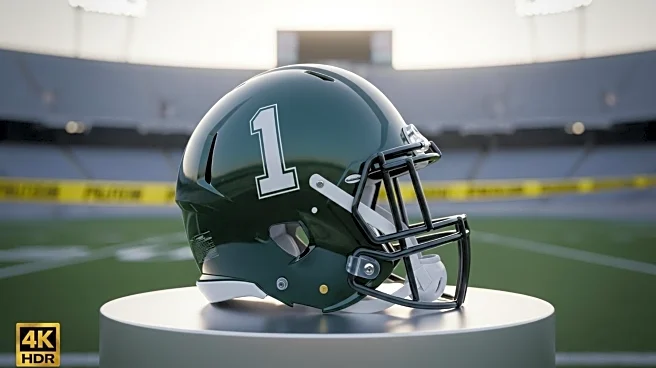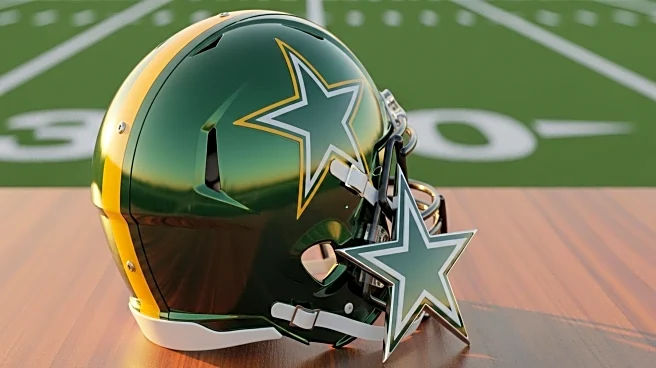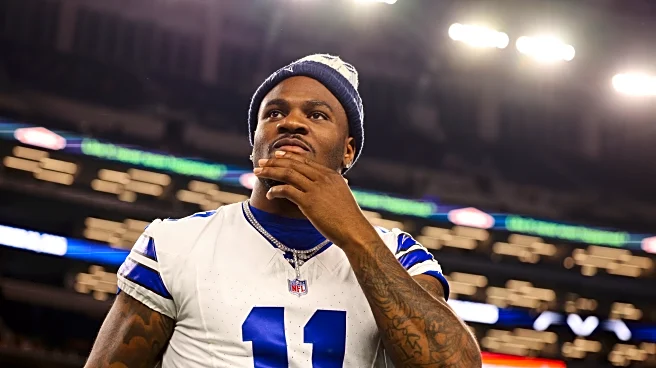What's Happening?
Micah Parsons, a prominent pass-rusher, has been traded from the Dallas Cowboys to the Green Bay Packers in a significant deal. Parsons, who previously wore the No. 11 jersey, will now don the No. 1 jersey with the Packers. This change comes after the Packers lifted a restriction that prevented wide receiver Jayden Reed from wearing the number. The trade involved the Packers sending defensive tackle Kenny Clark and two first-round picks to the Cowboys. Additionally, Parsons has signed a new four-year contract worth $188 million, with $120 million guaranteed. Parsons has consistently demonstrated his prowess on the field, recording at least 12 sacks in each of his four seasons.
Why It's Important?
The acquisition of Micah Parsons is a major move for the Green Bay Packers, potentially strengthening their defensive lineup significantly. Parsons' track record of high sack numbers and defensive pressures makes him a valuable asset, likely to enhance the Packers' defensive capabilities. This trade also reflects the Packers' strategic investment in their defense, as evidenced by the substantial contract offered to Parsons. For the Cowboys, losing Parsons means a significant shift in their defensive strategy, requiring adjustments to fill the gap left by his departure. The trade could impact the competitive dynamics within the NFL, particularly in the NFC North division.
What's Next?
Micah Parsons is expected to make an immediate impact on the Packers' defense in the upcoming 2025 season. His performance will be closely watched as he integrates into the team and adapts to the new environment. The Cowboys will need to strategize on how to compensate for the loss of Parsons, potentially looking to their draft picks or other trades to bolster their defense. Fans and analysts will be keen to see how Parsons' presence influences the Packers' overall performance and whether the trade proves beneficial for both teams involved.
Beyond the Headlines
The trade of Micah Parsons to the Packers highlights the ongoing strategic maneuvers within the NFL, where teams are constantly seeking to optimize their rosters for competitive advantage. The decision to allow Parsons to wear the No. 1 jersey, previously restricted, may indicate a shift in team culture or priorities. This move also underscores the financial dynamics of the league, with significant contracts reflecting the value placed on top-tier players. The trade could influence future negotiations and player movements, as teams assess the risks and rewards of such high-profile deals.
